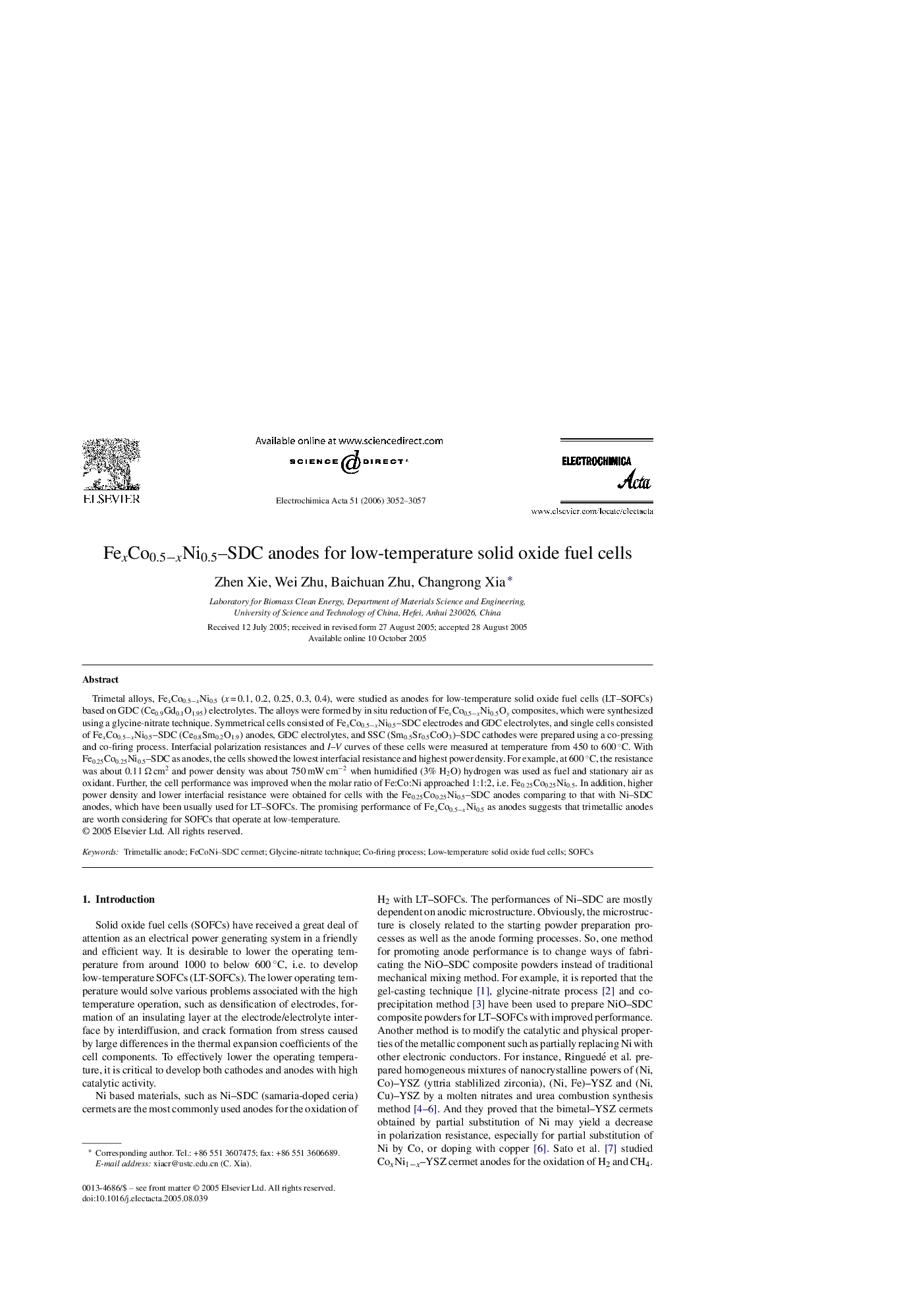| Article ID | Journal | Published Year | Pages | File Type |
|---|---|---|---|---|
| 196654 | Electrochimica Acta | 2006 | 6 Pages |
Trimetal alloys, FexCo0.5−xNi0.5 (x = 0.1, 0.2, 0.25, 0.3, 0.4), were studied as anodes for low-temperature solid oxide fuel cells (LT–SOFCs) based on GDC (Ce0.9Gd0.1O1.95) electrolytes. The alloys were formed by in situ reduction of FexCo0.5−xNi0.5Oy composites, which were synthesized using a glycine-nitrate technique. Symmetrical cells consisted of FexCo0.5−xNi0.5–SDC electrodes and GDC electrolytes, and single cells consisted of FexCo0.5−xNi0.5–SDC (Ce0.8Sm0.2O1.9) anodes, GDC electrolytes, and SSC (Sm0.5Sr0.5CoO3)–SDC cathodes were prepared using a co-pressing and co-firing process. Interfacial polarization resistances and I–V curves of these cells were measured at temperature from 450 to 600 °C. With Fe0.25Co0.25Ni0.5–SDC as anodes, the cells showed the lowest interfacial resistance and highest power density. For example, at 600 °C, the resistance was about 0.11 Ω cm2 and power density was about 750 mW cm−2 when humidified (3% H2O) hydrogen was used as fuel and stationary air as oxidant. Further, the cell performance was improved when the molar ratio of Fe:Co:Ni approached 1:1:2, i.e. Fe0.25Co0.25Ni0.5. In addition, higher power density and lower interfacial resistance were obtained for cells with the Fe0.25Co0.25Ni0.5–SDC anodes comparing to that with Ni–SDC anodes, which have been usually used for LT–SOFCs. The promising performance of FexCo0.5−xNi0.5 as anodes suggests that trimetallic anodes are worth considering for SOFCs that operate at low-temperature.
